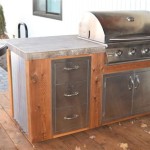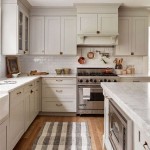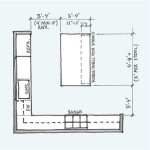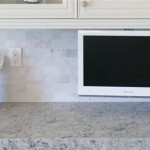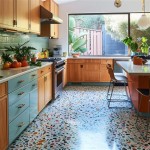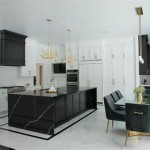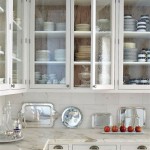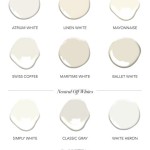Rustic Paint Colors For Kitchen: Achieving a Warm and Inviting Space
The kitchen, often considered the heart of the home, deserves a color palette that reflects warmth, comfort, and inviting character. Rustic paint colors provide an excellent avenue for achieving this desired ambiance. This style evokes feelings of natural materials, age-old craftsmanship, and a connection to the outdoors, all of which contribute to a welcoming and functional culinary space. Selecting the right rustic paint colors involves careful consideration of existing features, desired mood, and the overall design aesthetic of the home.
Rustic design incorporates elements that suggest history and natural beauty. Think weathered wood, exposed brick, and earthy textures. Translating this into paint color selections requires a move away from stark, modern hues and toward tones that feel muted, aged, and subtly complex. Colors inspired by nature are paramount. These typically include shades of brown, green, gray, and off-white, often with undertones that add depth and visual interest. The incorporation of warmer palettes creates a sense of coziness, while cooler tones can establish a more relaxed, serene environment.
Successful application of rustic paint colors relies on understanding the interplay of light, texture, and existing kitchen elements. The amount of natural light significantly impacts how a color appears in a space. Colors often appear darker and more intense in rooms with limited natural light, while abundant natural light can wash out some shades. Texture also plays a crucial role. Paint finishes like matte or eggshell enhance the rustic feel by minimizing reflectivity and highlighting the color's depth. The presence of wooden cabinets, countertops, and backsplashes should also inform paint color selection, ensuring a cohesive and harmonious design.
Understanding the Core Rustic Color Palette
The foundation of a rustic kitchen color scheme lies in understanding the core colors that define this style. These colors are typically derived from natural elements and are characterized by their muted tones and subtle variations. Brown, in its various forms, is a cornerstone of rustic design. From deep, rich chocolate browns to lighter, warmer tans, brown evokes feelings of stability and earthiness. These browns often complement wooden cabinetry and create a grounding effect in the kitchen.
Green is another essential element, representing nature and freshness. Olive green, sage green, and muted forest greens are all excellent choices. These shades bring tranquility and a sense of connection to the outdoors. Green pairs well with both brown and off-white tones, creating a balanced and harmonious color scheme. Consider using green on walls or cabinets to introduce a calming, natural element.
Gray, ranging from cool charcoal grays to warmer greiges (gray-beige), provides a neutral backdrop that allows other colors and textures to shine. Gray adds a sense of sophistication and can be used to create a more modern rustic aesthetic. When selecting gray, it is important to consider the undertones. A gray with a blue undertone may feel cold in a space dominated by warm woods, while a gray with a yellow or brown undertone can create a more cohesive and inviting atmosphere.
Off-white shades, including creams, beiges, and ivories, are crucial for creating a light and airy feel in a rustic kitchen. These colors act as a canvas, allowing other rustic elements to stand out. Off-white can be used on walls, ceilings, or cabinets to brighten the space and create a sense of openness. The choice of off-white shade depends on the overall color scheme. Warmer off-whites often complement wood tones and brown accents, while cooler off-whites can provide a subtle contrast against darker elements.
These core colors can be combined in numerous ways to create a personalized rustic kitchen. The key is to maintain a balance between warm and cool tones and to consider the existing features of the kitchen. Experimenting with different combinations and undertones is essential for finding the perfect color palette.
Incorporating Texture and Finishes for a Rustic Effect
Beyond color selection, the texture and finish of the paint play a significant role in achieving a rustic aesthetic. Matte and eggshell finishes are generally preferred over high-gloss finishes, as they minimize reflectivity and enhance the color's depth. These finishes create a softer, more natural look that is in keeping with the rustic style. Matte finishes are particularly effective in highlighting the imperfections and textures of walls, adding to the overall character of the kitchen.
Techniques such as distressing and antiquing can further enhance the rustic feel. Distressing involves intentionally creating imperfections in the paint, such as scratches, dents, and worn edges. This technique gives cabinets and furniture a sense of age and history. Antiquing involves applying a glaze or stain over the paint to create a weathered, aged appearance. These techniques are particularly effective on cabinets and trim, adding depth and visual interest.
Using textured paint or faux finishes can also create a rustic effect. Textured paint contains particles that add dimension and depth to the walls. Faux finishes, such as Venetian plaster or limewash, can mimic the look of traditional plaster walls, adding a sense of authenticity and character. These techniques require specialized application, so it is important to research and practice before attempting them.
The type of paint used also contributes to the overall aesthetic. Natural paints, such as milk paint and clay paint, are often preferred for rustic kitchens. These paints are made from natural ingredients and have a matte finish that enhances the rustic feel. They also tend to be more environmentally friendly than conventional paints. However, natural paints may require more preparation and maintenance than conventional paints.
Consider the sheen of the paint based on the area. While matte or eggshell is preferred for walls, a slightly higher sheen may be beneficial for cabinets to resist staining and allow for easier cleaning. This balance ensures the aesthetic aligns with the functional needs of a high-traffic kitchen space.
Key Considerations for Choosing Rustic Kitchen Paint Colors
Before embarking on a painting project, several key considerations should be taken into account. The size and layout of the kitchen are crucial factors. Smaller kitchens often benefit from lighter colors that create a sense of spaciousness, even within the rustic palette. Larger kitchens can handle darker, richer colors that create a cozy and intimate atmosphere.
The existing features of the kitchen should also inform paint color selection. The color and material of the cabinets, countertops, and backsplash should be considered. If the cabinets are already painted or stained a specific color, the wall paint should complement that color. Similarly, the color and pattern of the countertops and backsplash should be taken into account. Aim for a cohesive color scheme that harmonizes all the elements of the kitchen.
The amount of natural and artificial light in the kitchen is another important consideration. Colors often appear different under different lighting conditions. It is advisable to test paint samples in the kitchen under both natural and artificial light before making a final decision. This will help to ensure that the colors look as desired in all lighting conditions.
The overall design aesthetic of the home should also be considered. The kitchen should complement the style of the rest of the house. If the home has a modern or contemporary design, a more refined rustic palette may be appropriate. If the home has a traditional or farmhouse design, a more rugged and weathered rustic palette may be preferred.
Finally, personal preference should be a major factor. The kitchen should be a space that reflects the homeowner's personality and style. Choose colors that make the homeowner feel comfortable and inspired. Don't be afraid to experiment with different colors and textures to create a unique and personalized rustic kitchen.
By carefully considering these factors, homeowners can select rustic paint colors that create a warm, inviting, and functional kitchen space that resonates with their personal style and enhances the overall design of their home.

7 Fantastic Kitchen Rustic Modern Color Combinations Photos Farmhouse Colors Kitchens Painted Cabinets

Easy Kitchen Color Ideas Colorfully Behr Blog
:strip_icc()/102208273-b8b528884cd144a3a8e813140cae5b7e.jpg?strip=all)
Rustic Kitchen Ideas

Color Palettes Rustic Philadelphia By Rta Cabinet Store Houzz Dining Room Colors Paint For Home

The Best Cabinetry Colors For A Rustic Kitchen Kraftmaid

30 Best Kitchen Color Ideas And Combinations 2024
:strip_icc()/102168658-3e92806010e74dea89e8379d0c260c74.jpg?strip=all)
Rustic Kitchen Ideas

Rustic Glam Interior Paint Color Palette Etsy

Rustic Boho Paint Color Scheme Prepackaged Professional Etsy

When Trying To Decide On A Color Paint Your Kitchen Cabinets Keep In Mind Tha Distressed For Sale Rustic

